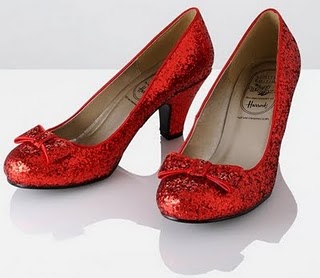Click
HERE to read Howl.
This is the story of Mumon a rare red wolf that was raised in captivity and then released into the wild as an experiment to see if he and other wolves like him could survive in the wild. The wolves soon find out that they have forgotten how to howl and that without this howl there is no one leader to unite them and they live in fear. Mumon decides to go on a journey to find his howl. Guided by nothing more than instinct and the forest around him he follows an unseen path. In Mumon's search for his howl he himself becomes the howl and restored freedom to his pack.
“Nothing is original. Steal from anywhere that resonates with inspiration or fuels your imagination. Devour old films, new films, music, books, paintings, photographs, poems, dreams, random conversations, architecture, bridges, street signs, trees, clouds, bodies of water, light and shadows. Select only things to steal from that speak directly to your soul. If you do this, your work (and theft) will be authentic. Authenticity is invaluable; originality is non-existent. And don’t bother concealing your thievery - celebrate it if you feel like it. In any case, always remember what Jean-Luc Godard said: “It’s not where you take things from - it’s where you take them to.”
--Jim Jarmusch
I remember hearing this quote in high school and not really understanding what it meant. I thought that if I took ideas that had already been conceived and combined them into a Franken-idea that it would be original and good. While I now know that this is not completely true I feel that the root of this quote resonates with me more as a creative person now that I am older.
First he says to steal everything, devour old media, new media, and things in everyday life, nature, and dreams. In this I feel that he is saying to absorb everything and anything that you can. In doing so I have increased not only my worldview but also my understanding of what has been done in the past. I have found that by ‘devouring’ anything and everything also has helped me find what really speaks to me as a creative person, what he calls, speaking directly to your soul. I think this is the most important sentence in this quote. I feel that it is very true that only in stealing things that only resonate in your soul can you truly create something that is authentic.
As humans I also feel that we all strive to express ourselves and that we all strive for a creative outlet. This quote is especially pertinent in today’s mediated world where everything is more available and the creative process is changing. It is more about building on what has come before than stealing direct ideas, I think that that is what Jarmusch is saying. This is being thrown into question of what is truly authentic in todays society with all of the copyright lawsuits and problems with taking people ideas; the idea of ‘Intellectual property.’
It all comes down to authenticity and I feel that Jarmusch is backing up his thought with the quote by Jean-Luc Godard saying, “It’s not where you take things from- it’s where you take them to.” It is important to not to take whole ideas and change minor things. For example Shakespeare was far from original in the plots to his plays; but in the text and ideas that he created evolved a completely new form of genius that the world would be without if not for his willingness and boldness to steal from past ideas. The same is true for the artist Girl Talk. He is taking once innovative songs and turning them into something even more new and innovative.
It also makes me think of Albert Einstein when he said, “Problems cannot be solved by the same level of thinking that created them.” I add this to back up what I was saying about how it is important to not steal directly but to borrow ideas. If we are all doing the same things then we are getting nowhere fast. If we choose to take ideas and elevate them combine them and make something new an innovative, then we are thinking on a different level that they were originally created. This is imperative to a successful idea.
So is it true that in reality nothing is original? At the core of any authentic, new, and great idea there is a root to something in the past that has already been done. I take this with a grain of salt and always try to understand that it is okay to build off others past ideas but not to literally steal ideas directly. That is the only way to make something new and authentic.













